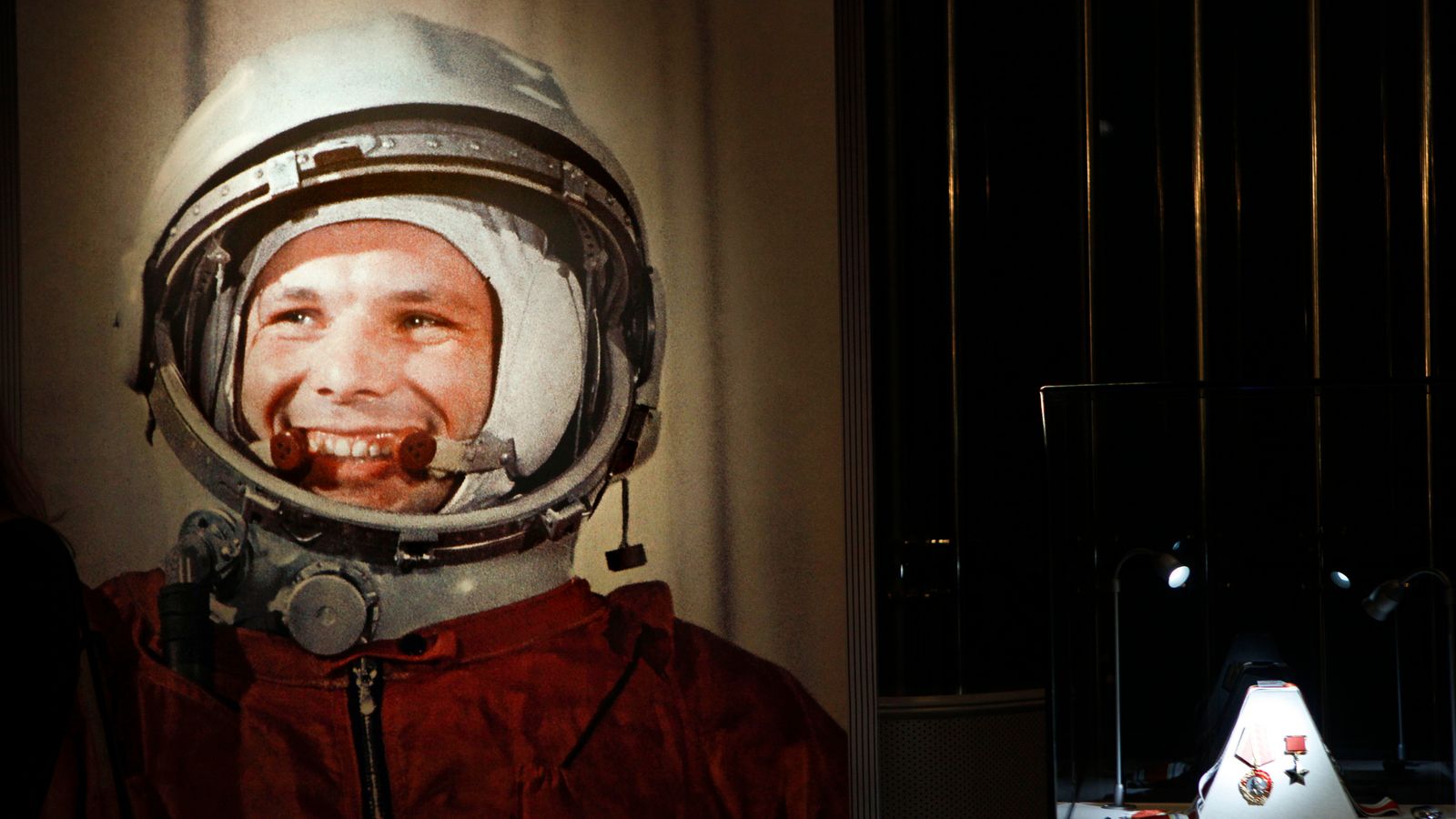Russia is celebrating the 60th anniversary of Yuri Gagarin, the cosmonaut who was the first person in space.
Gagarin’s 108-minute mission on 12 April 1961 took the Space Age to a new level and marked a historic achievement for the then Soviet Union.
His history-making Vostok 1 space flight and single orbit of the Earth made him a national hero – and an international celebrity – with the United States beaten in the tight race to launch a man beyond the planet’s atmosphere.
Sixty years on, he remains a symbol of bravery, success and pride in Russia.
The anniversary of his voyage is marked every year by Cosmonautics Day and sees Russians lay flowers at monuments dedicated to Gagarin’s achievement.
Over the years, he has been immortalised in murals across Russia, with a 138ft (42m) statue on Moscow’s Leninsky Avenue.
Born on 9 March 1934 in the village of Klushino, more than 100 miles west of Moscow, Gagarin had a humble upbringing.
His parents were farmers and his village was the centre of many wars and conquests, including a German invasion during World War Two.
In 1946, his family moved to nearby Gzhatsk, later renamed Gagarin.
Having originally trained as a steelworker, he enrolled in the Saratov Technical College, where he learned how to pilot a light aircraft.
In 1955, he enrolled in pilot school and joined the Soviet air force as a lieutenant, where he was chosen to board Vostok 1.
Gagarin was just 27 years old when he blasted off on the first manned spaceflight.
After landing back on his feet, Gagarin continued to train as a pilot.
He died at the age of 34 during a training jet crash in March 1968, and was buried near the Kremlin Wall alongside former Soviet leaders.
There are statues of the cosmonaut across Russia, including in a field near the Volga River where Gagarin landed after his historic flight, and the site also bears a commemorative obelisk.
A theme park was set up there to mark the 60th anniversary of his flight.
Marianna Poberzhskaya, associate professor at Nottingham Trent University, said: “There is still a lasting memory of Gagarin in Russia, his legacy is very much still alive. It is one of the few positives from the Soviet era and it has many benefits to the nationalist identity. Over the years his memory has been commercialised in Russia, through souvenirs, TV shows and statues.”






















